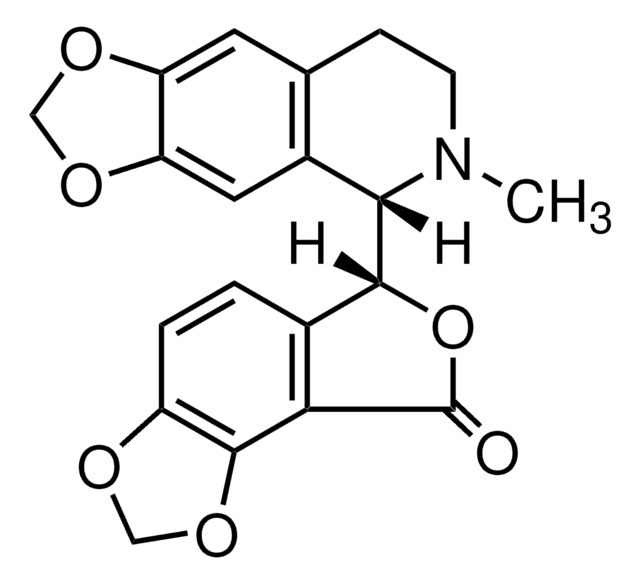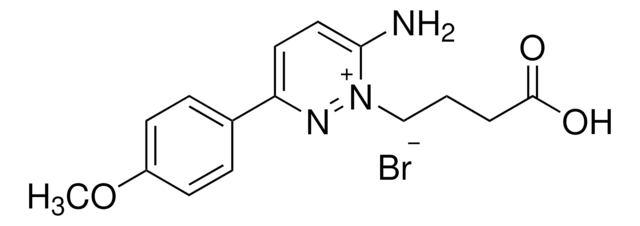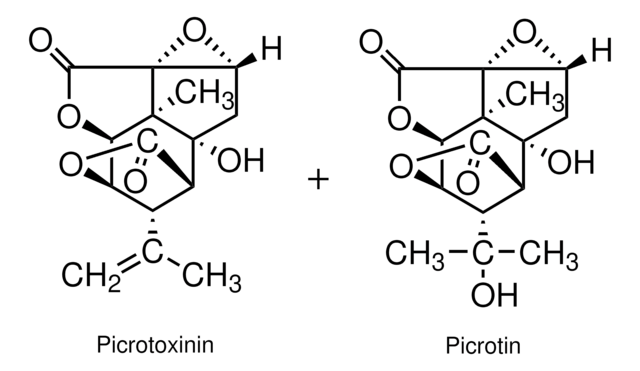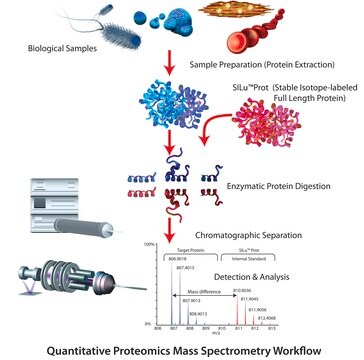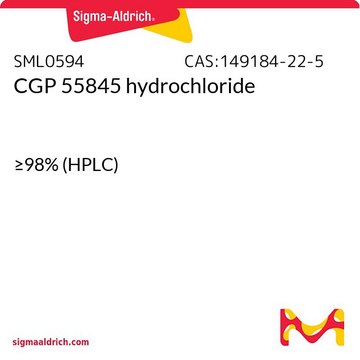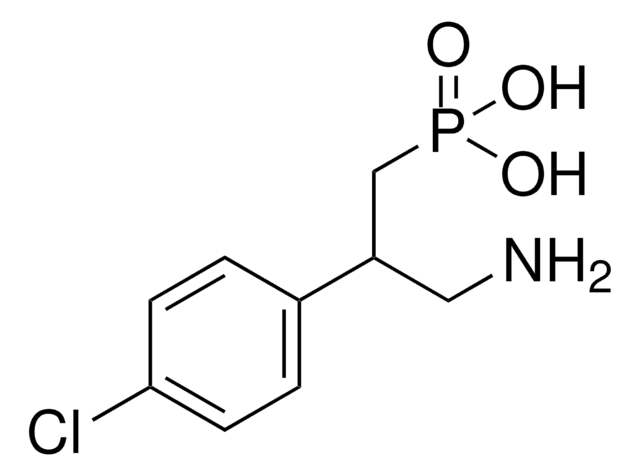SML0593
CGP52432
≥98% (HPLC)
Synonym(s):
[3-[[(3,4-Dichlorophenyl)methyl]amino]propyl](diethoxymethyl)-phosphinic acid
About This Item
Recommended Products
Quality Level
assay
≥98% (HPLC)
form
powder
storage condition
desiccated
color
white to beige
solubility
H2O: 1 mg/mL, clear (warmed)
storage temp.
2-8°C
InChI
1S/C15H24Cl2NO4P/c1-3-21-15(22-4-2)23(19,20)9-5-8-18-11-12-6-7-13(16)14(17)10-12/h6-7,10,15,18H,3-5,8-9,11H2,1-2H3,(H,19,20)
InChI key
GJZVQXWEIYRHBE-UHFFFAOYSA-N
Application
- to study its effects on the simulation of the onset of status epilepticus (SE) in mice
- for voltage-clamp recording in mice neurons
- to study its effects on the GABAB receptor-mediated neurotransmission in guinea pig hippocampus
Biochem/physiol Actions
Features and Benefits
Other Notes
Storage Class
11 - Combustible Solids
wgk_germany
WGK 3
flash_point_f
Not applicable
flash_point_c
Not applicable
Choose from one of the most recent versions:
Certificates of Analysis (COA)
Don't see the Right Version?
If you require a particular version, you can look up a specific certificate by the Lot or Batch number.
Already Own This Product?
Find documentation for the products that you have recently purchased in the Document Library.
Our team of scientists has experience in all areas of research including Life Science, Material Science, Chemical Synthesis, Chromatography, Analytical and many others.
Contact Technical Service